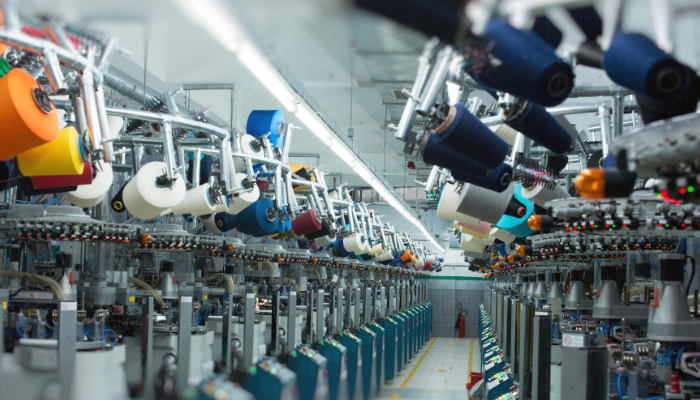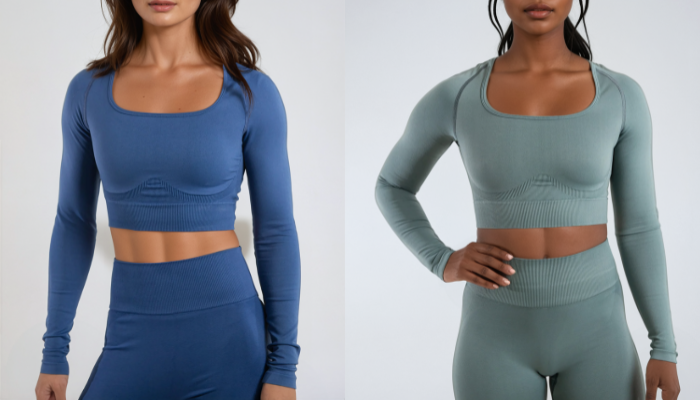Industry Trends to Watch in 2025: Fashion Meets Sustainability

As we step into 2025, the fashion industry is in the midst of a significant transformation. Not only are new styles and innovative designs on the horizon, but the shift toward sustainability continues to gain momentum. Fashion is no longer just about what's stylish — it’s about how we make and consume clothing in a way that supports the planet. For companies like Pioneer Clothing, staying ahead of these trends is vital to both the environment and your brand's longevity. Here are the top industry trends to watch in 2025, where fashion and sustainability are seamlessly merging.
1. Circular Fashion: Closing the Loop
One of the most exciting trends in fashion is the rise of circular fashion. This involves designing products with the end of their life in mind — meaning clothes are made to be reused, recycled, or upcycled rather than ending up in landfills. By 2025, we expect to see a wider adoption of circular production models, where clothing brands take responsibility for the full life cycle of their products. Companies will increasingly offer take-back programs, repairs, and encourage customers to recycle or return garments.
For Pioneer Clothing, this could mean investing in fabric innovations that are biodegradable or creating designs that are easy to disassemble for recycling. Additionally, using recycled materials in new collections will be a hallmark of brands aiming to close the loop on textile waste.
2. Sustainable Materials: Eco-friendly Fabrics Are the Future
Fashion's material choices are evolving at an accelerated pace. In 2025, expect to see a significant increase in the use of sustainable fabrics made from organic or recycled materials. Fabrics like organic cotton, hemp, bamboo, and innovative materials like mushroom leather or lab-grown textiles will dominate the fashion scene.
Furthermore, textile recycling technologies are improving, and more brands are turning to recycled polyester, nylon, and even ocean plastics. The fashion industry’s shift towards sustainable materials will not only reduce environmental harm but will also create new opportunities for brands to innovate.
At Pioneer Clothing, focusing on fabric innovation and investing in partnerships with suppliers that specialize in sustainable textiles can set you apart as a leader in eco-friendly fashion.
3. Transparency and Ethical Practices: Consumer Demand for Honesty
Today’s consumers are more informed than ever. With the rise of social media and a growing emphasis on corporate responsibility, shoppers are demanding transparency regarding how and where their clothes are made. Brands that prioritize ethical labor practices, fair wages, and traceable supply chains are becoming increasingly popular.
By 2025, transparency will be an expectation, not just a trend. Consumers will expect to see detailed information about the sourcing of materials, manufacturing conditions, and even the carbon footprint of each garment. To stay competitive, Pioneer Clothing should embrace digital technologies like blockchain to trace the journey of each item from raw material to retail shelf, ensuring that every piece aligns with ethical standards.
4. Slow Fashion: Quality Over Quantity
Fast fashion has long dominated the industry, but the slow fashion movement is gaining strength. As consumers become more aware of the environmental and ethical impacts of mass-produced clothing, they are turning to brands that prioritize quality, durability, and timeless design over fleeting trends. Slow fashion encourages investment in high-quality pieces that are made to last, both in terms of material and design.
In 2025, we can expect to see a surge in brands emphasizing slow fashion principles, offering pieces that are designed to be worn for years. Pioneer Clothing can play a key role in this trend by focusing on timeless, high-quality designs that stand the test of time, paired with messaging that educates consumers on the benefits of purchasing fewer, better-made items.
5. Digital Fashion and Virtual Clothing: The Intersection of Technology and Style
While it may sound futuristic, digital fashion is quickly becoming a reality. With the rise of virtual reality (VR), augmented reality (AR), and digital avatars, more brands are experimenting with creating virtual clothing. Digital fashion allows consumers to buy virtual garments that they can wear in online spaces, social media platforms, or video games, all without any environmental impact.
By 2025, digital fashion will be integrated into major fashion houses’ offerings, and brands like Pioneer Clothing can leverage this trend to create unique virtual collections. This could be a step toward reducing clothing waste while engaging younger, tech-savvy audiences who want to express themselves in the digital world.
6. Local Manufacturing and On-Demand Production: Reducing Carbon Footprint
Global supply chains have long been a source of criticism due to their carbon emissions, lengthy shipping times, and waste. As sustainability becomes a top priority for the fashion industry, we’re likely to see a shift toward more localized production. Brands will invest in on-demand manufacturing processes, where clothing is made based on consumer orders, reducing the need for large inventories and excess waste.
For Pioneer Clothing, this might mean exploring local production partnerships or implementing technologies like 3D knitting, which enables on-demand garment creation. On-demand production can significantly lower the carbon footprint of manufacturing by reducing transportation emissions and material waste.
7. Fashion Rental and Resale: A New Way to Shop
The resale and rental fashion markets are growing rapidly, as consumers shift away from fast fashion in favor of more sustainable alternatives. Rental services for high-end fashion items, as well as platforms for buying and selling second-hand clothes, are on the rise. This trend is not only eco-friendly but also allows consumers to enjoy variety without constantly buying new items.
By 2025, more consumers will embrace rental services for everyday clothing, while resale platforms will continue to gain traction. Pioneer Clothing can tap into this market by offering rental options for key collections or by creating a resale program for pre-owned items, encouraging consumers to extend the life cycle of their garments.
8. Regenerative Agriculture: The Future of Fabric Farming
One of the most exciting developments in sustainable fashion is regenerative agriculture. This method goes beyond organic farming to actively restore and improve the land. It focuses on soil health, biodiversity, and carbon sequestration, making it a powerful tool in the fight against climate change.
Brands are starting to partner with farms that practice regenerative agriculture, particularly in the production of natural fibers like cotton and wool. By 2025, regenerative agriculture will play a more prominent role in fashion’s sustainability efforts. Pioneer Clothing can lead the way by sourcing materials from regenerative farms, positioning your brand as a true environmental champion.
Conclusion: Fashion’s Green Future
The fashion industry is undergoing a profound shift, driven by the need to address sustainability and environmental concerns. In 2025, these trends will become not just a passing phase but the foundation of how fashion operates in the future. By embracing circular design, sustainable materials, ethical practices, and digital innovations, companies like Pioneer Clothing can stay ahead of the curve, making a positive impact on both the planet and the consumer experience.
As we move forward, it's clear that the future of fashion is green, and those who prioritize sustainability today will be leading the charge tomorrow. Let’s embrace these changes and create a fashion industry that not only looks good but also does good.



